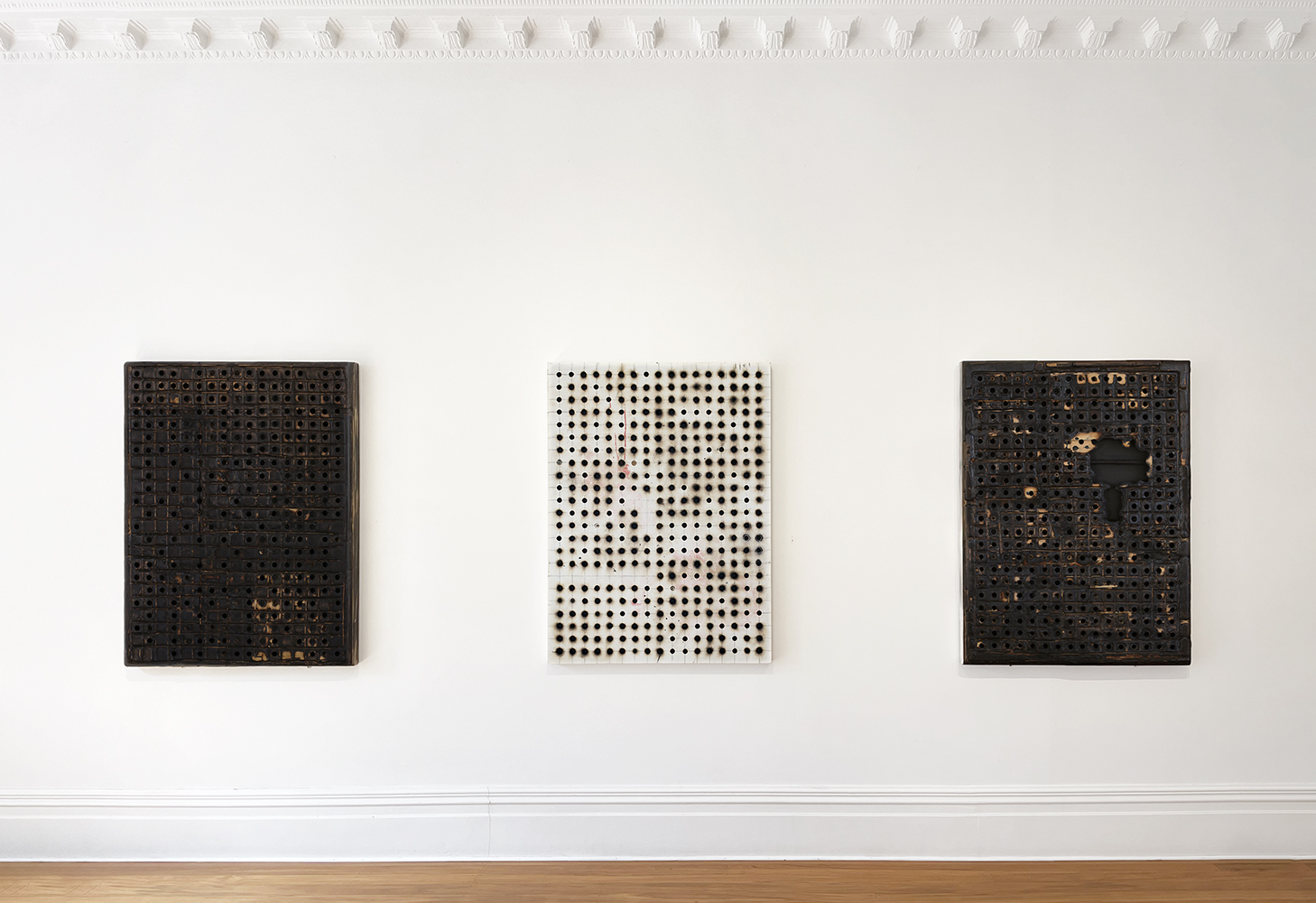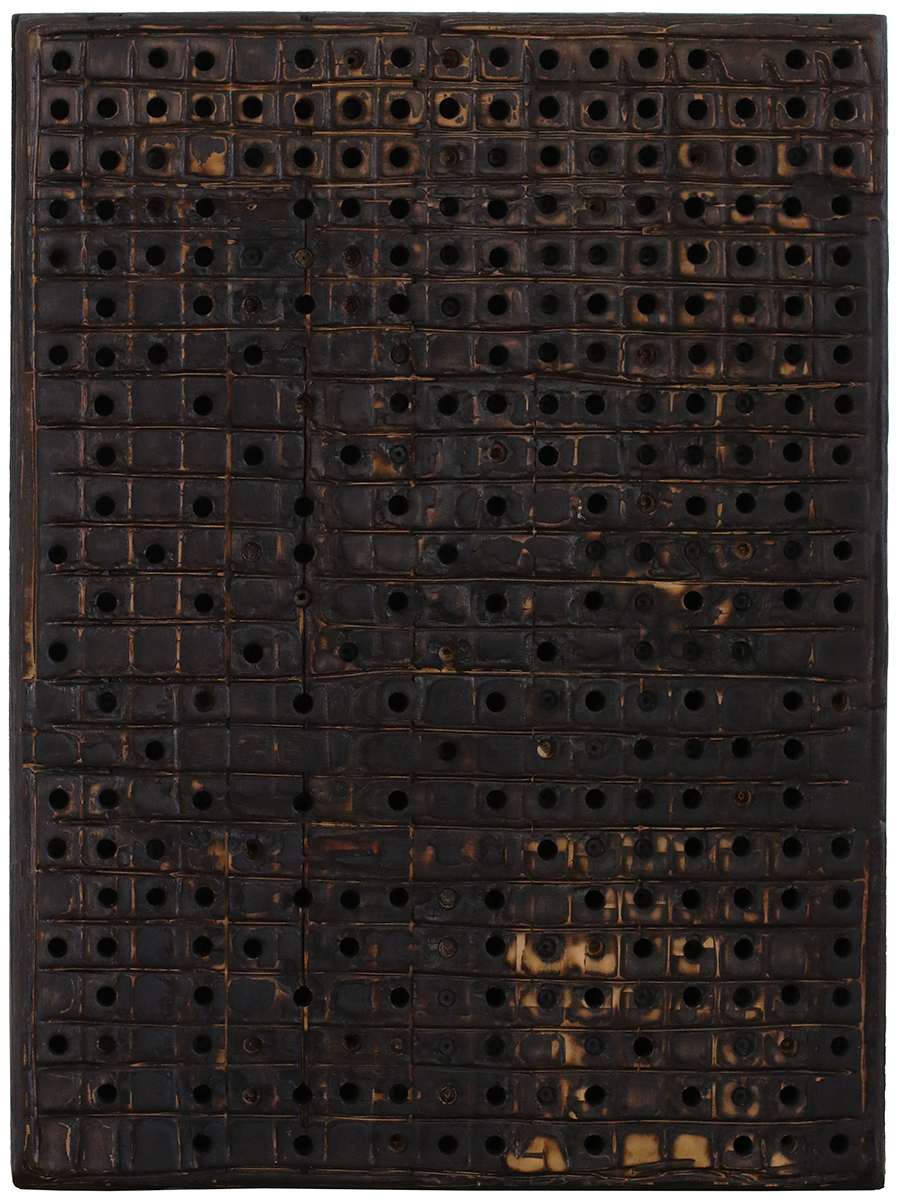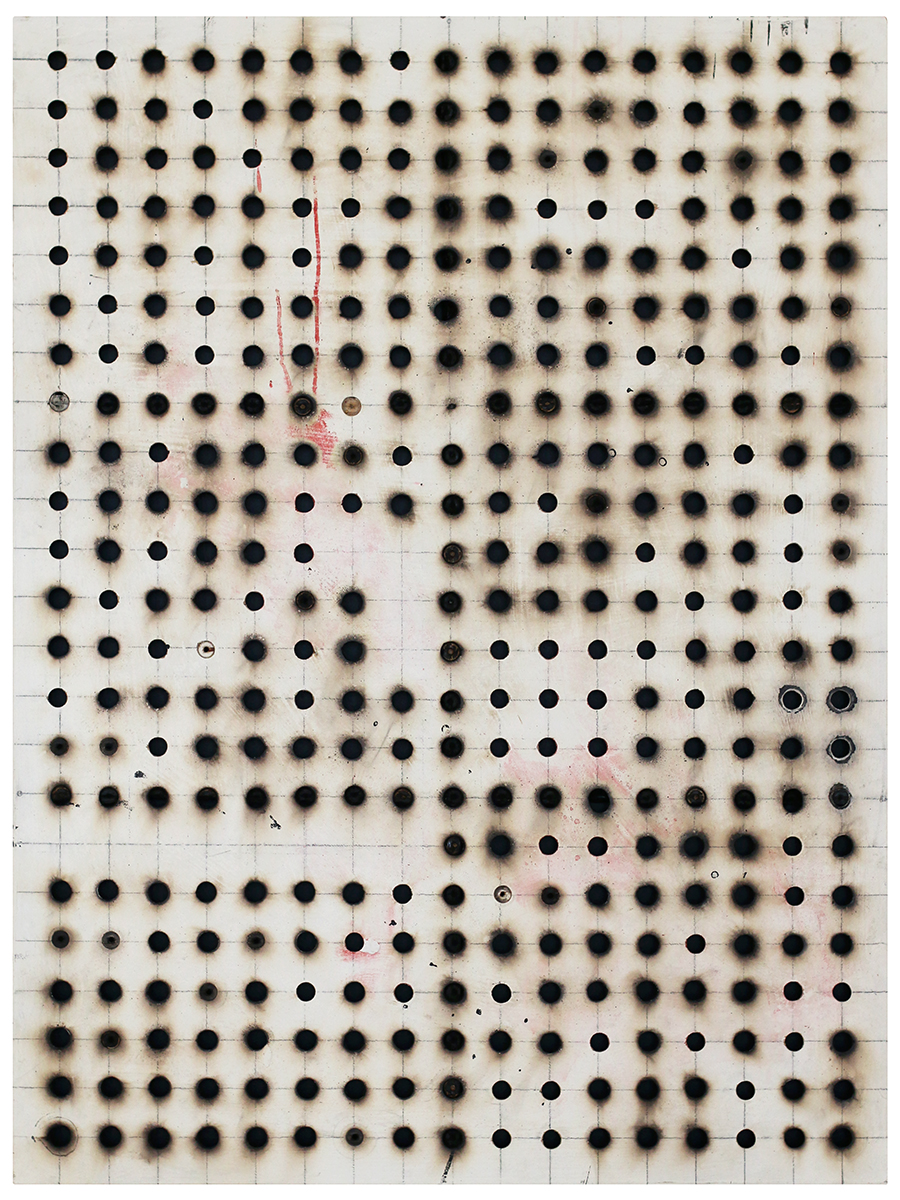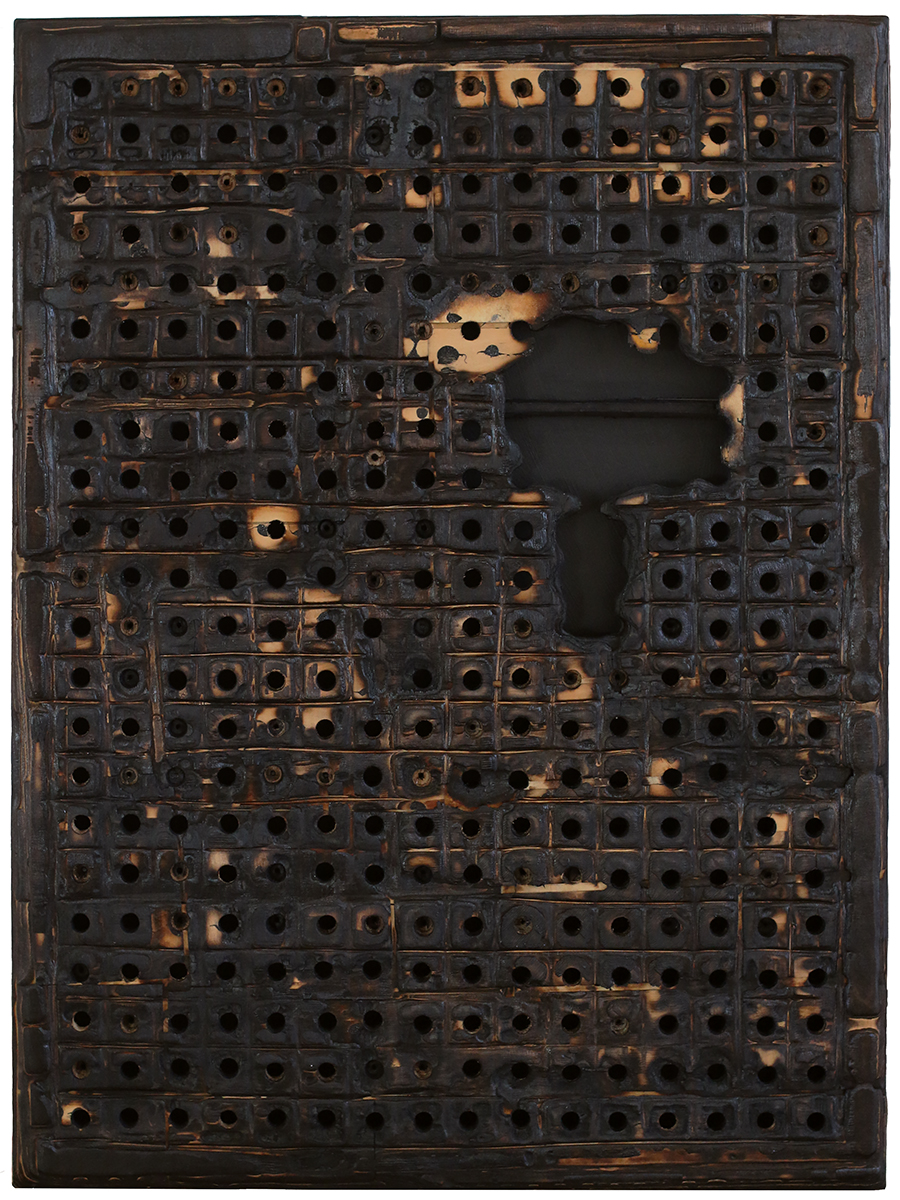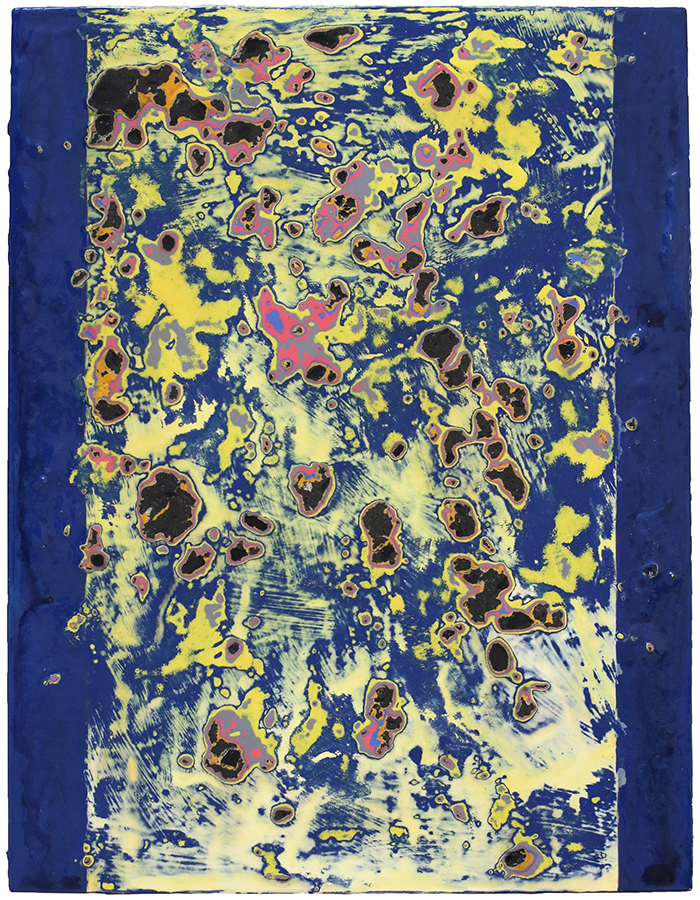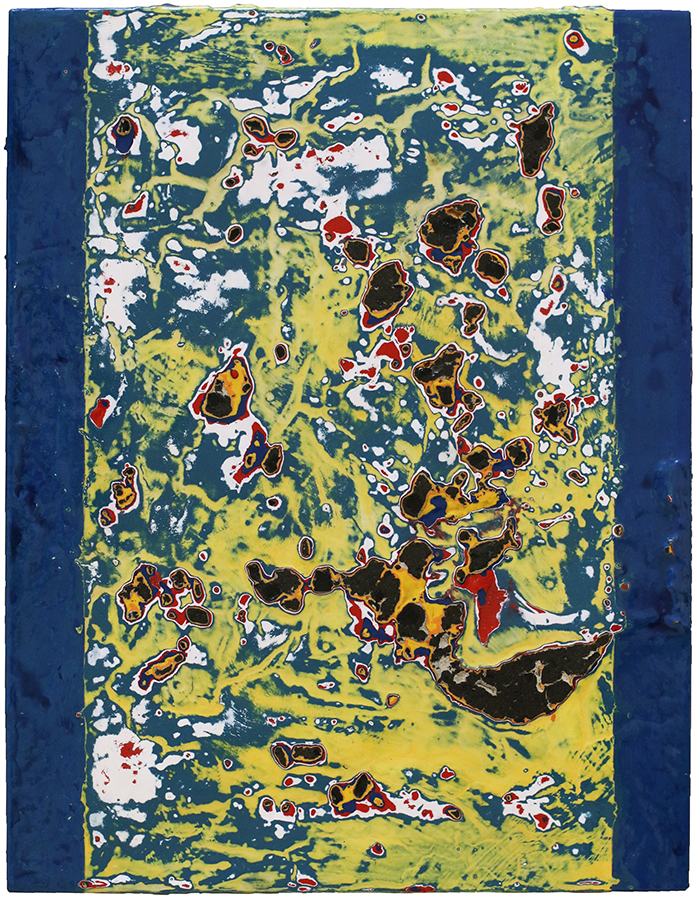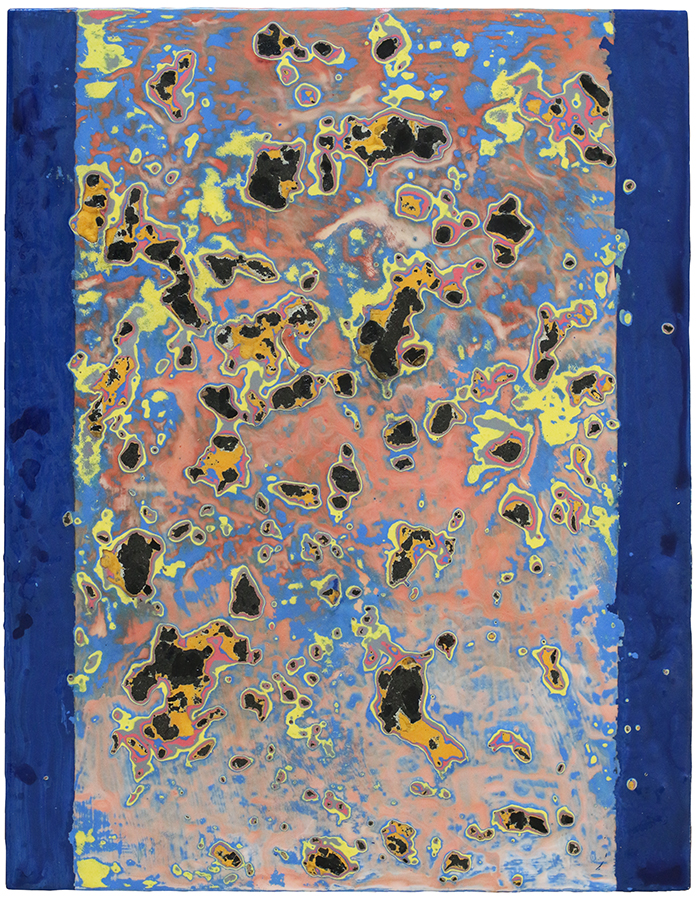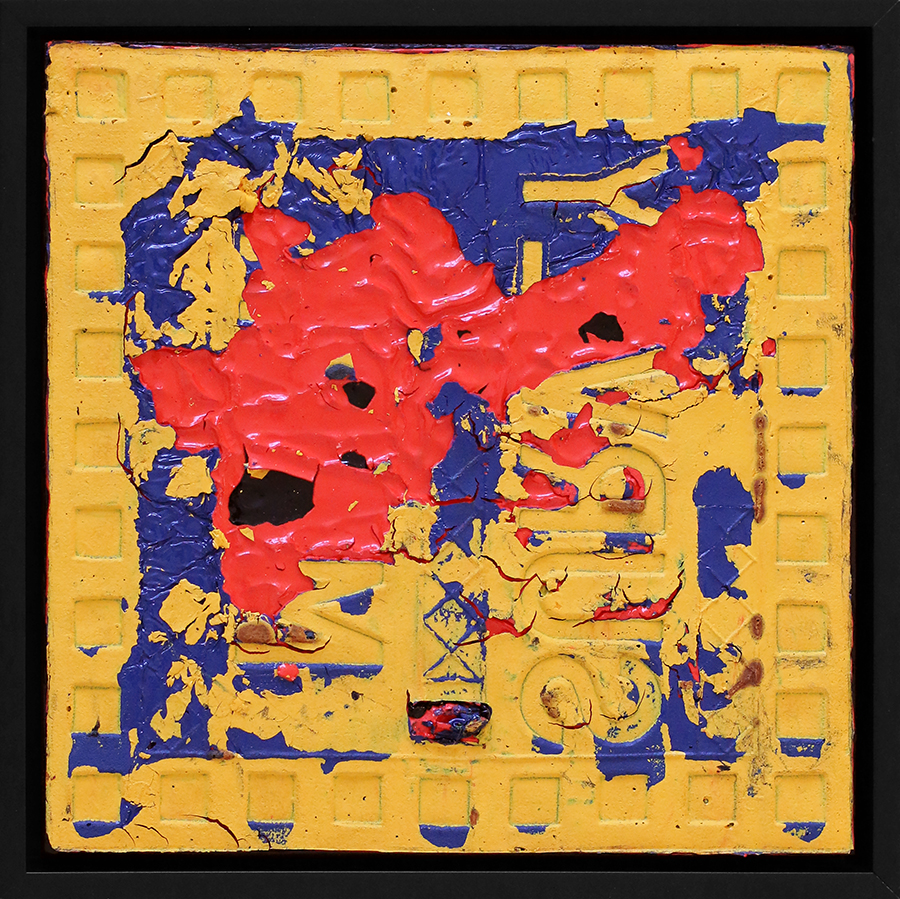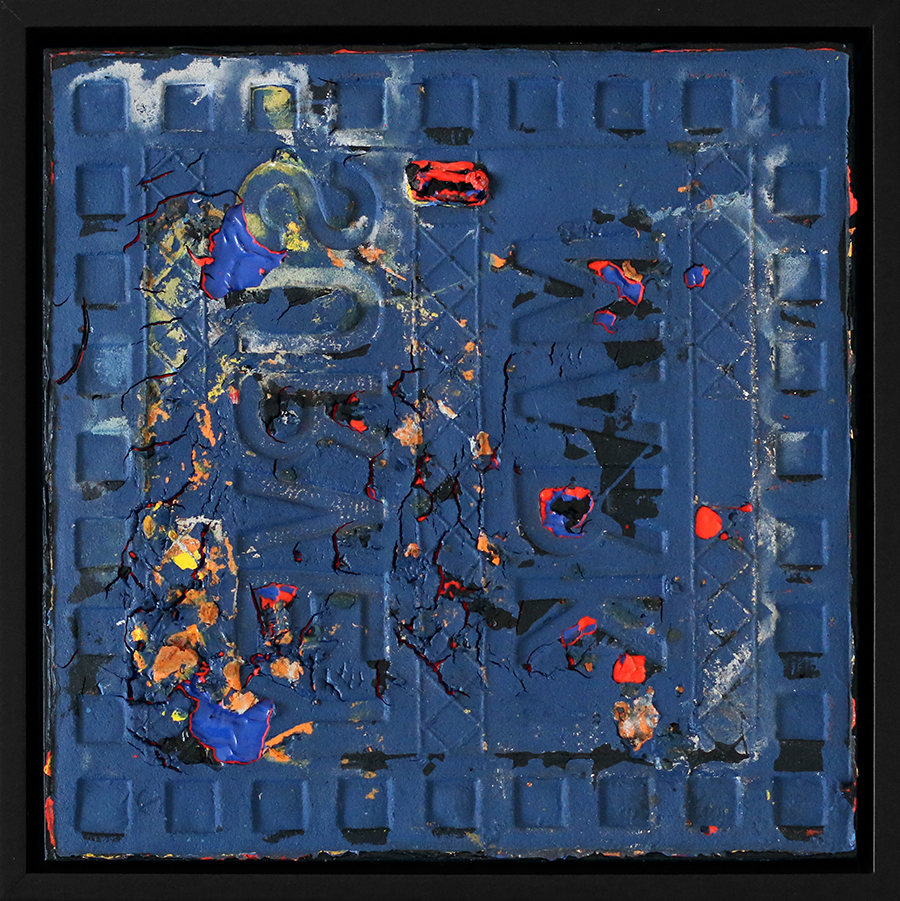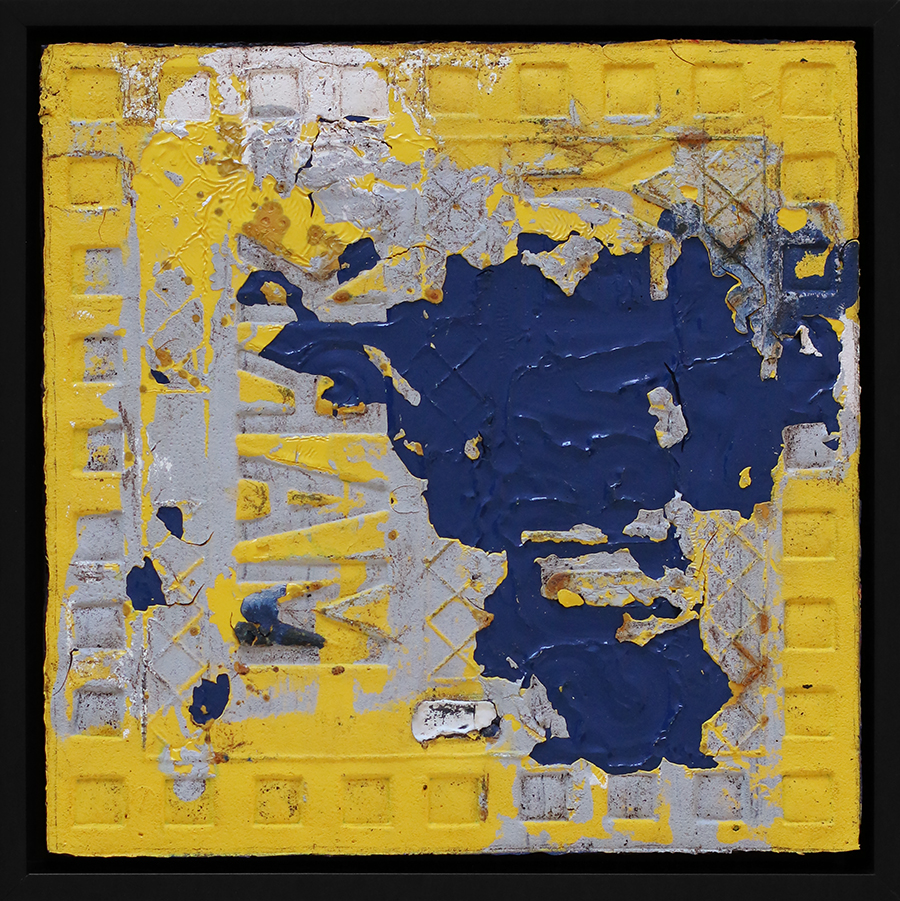SEFTON RANI – The Rosebank Road Paintings – 7-31 Oct 2025
Rosebank Road was the location of the paint factory in which Sefton Rani’s father once worked. Memories of the factory – enamel paint, viscous and slippery, vats of colour, the team of Pasifika workers, mixed languages, noisy machinery and the impact of seeing the factory burnt down during Sefton’s boyhood – fed into this current body of work as did more recent experiences.
The two dark works with burnt surfaces and the white piece link back to a monumental 6-panel work, Gabrielle, made during Rani’s stint as resident artist at McCahon House Parehuia earlier this year. It was fortuitous that he was awarded the residency for he lost his home and studio at Piha when Cyclone Gabrielle struck. “It wasn’t my initial intention, but it turned into a cathartic work about the night of the cyclone and its impact. The burnt work becomes more attacked as you read it left to right. There are the elements of ‘boarding things up’ and the white piece gives a strong optical flicker. The three works in this new exhibition relate to the start, middle and end of Gabrielle.”
To make ‘And just like that it was over’ and ‘And just like that it never was’ Rani layered ply, excavated it with drills, angle grinders, chisels and flame, then scrubbed the surfaces back and sealed them. They smell of the charred wood. They are backed, creating a dark cavity, which we are made aware of by the loose grid of punctuated holes. ‘Sacred Conversations’, with its pale surface and optical flicker, was designed to show the confusion and inability to focus that follows a disastrous event like a cyclone.
The Fordite works refer back to the paint factory and the build-up of paint on surfaces over time. Fordite, also known as Detroit agate, is paint from the spray booths of car factories which has been chipped off, polished and is now commonly used in jewellery. Rani’s paintings feature a similar layering of time and material, constructed not only from paint but also incorporating sand and studio detritus.
The small Dappled Light works are enamel paint skins cast on a survey marker then peeled off and mounted. Sefton found the marker near McCahon House and saw it as marking both place and time. Significantly, the day he moved into the residency was the same day his home in Piha was demolished. For him, these works signify the loss of one place and his relocation somewhere new – a change, a start, a step forward. The title Dappled Light refers to the shadows cast by the beautiful trees surrounding the McCahon House residency. The survey marker works also include X shapes and repetitive square forms, which link back to Pasifika patterns.
While all the works in this exhibition are resolutely abstract, through their materiality Sefton Rani has grounded them in direct experience and therein lies their strength.
ARTIST TALK: Wed 8 Oct, 12noon
